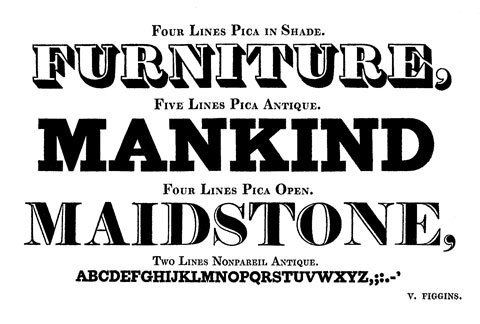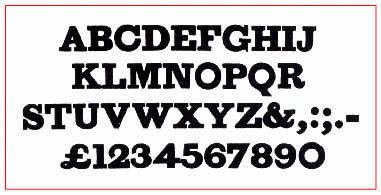Name Vincent Figgins | ||
 | ||
Died 1844, London, United Kingdom | ||
Vincent Figgins (1766-1844), born in Peckham, England, was a British punch-cutter and type-founder. He started his career as an apprentice to Joseph Jackson from 1782 until Jackson's death in 1792.
Contents

Foundry

Figgins was expected to take over Jackson's foundry, but due to financial restraints he could not afford it. The foundry was then bought by William Caslon III. A close friend of Jackson's, John Nichols encouraged Figgins to open his own foundry. Nichols had witnessed Figgins’ work and talent many times. Figgins followed his advice and the fact that Caslon bought Jackson's foundry this did not slow Figgins down, that same year he was able to open his own foundry. Later on in his career, after he became very successful he wrote to Nichols and spoke of his generosity during the beginning of his career.

Vincent Figgins would run his foundry until 1836 when he retired. He would leave his foundry to his two sons Vincent and James. They were met with the same success as their father. They published their first specimen book in 1838. After his first son, Vincent II died in 1860 the business and the foundry were continued by his brother James. The family owned foundry would then live on once more; after James died the foundry was taken over by his son James II. In 1868 he was elected to Parliament, he retired from the business. The foundry then moved to 3-7 Ray Street, Clerkenwell in 1865. The building still retains the original cast iron railings bearing a VJF monogram.
Career
His first important commission was to make a facsimile type for Macklin's Bible. Bensley, the printer of the Macklin’s Bible (which was originally cut by Jackson) had decided to renew the type and have it correspond with the original. Instead of going to Caslon, who had Jackson's matrices, he asked Figgins. Figgins was then able to make a perfect recreation of the type. He then worked on a similar job to finish the Double Pica type in Robert Bowyer’s edition of David Hume's The History of England. This was being worked on by Jackson at the time of his death. In 1793 he issued his first specimen book, which included a long bodied English typeface. This consisted of five leaves and was printed by Bensley.
He followed this by producing a number of Roman types for English and Scottish printers. He is credited with the design of the first slab serif or Egyptian typeface, which he released under the name Antique in 1815, on which Egiziano Black was based. The first Slab Serif typeface was an outrage to the public. This was designed from scratch without historical reference. Not everyone disliked the new form of type, though. Critic’s comments would range from “the most brilliant typographical innovation of the nineteenth century”, to being referred to as a “typographical monstrosity”. Figgins also made a number of sans serif typefaces as well. In fact he coined the term “sans-serif” with his sans serif typeface which was named “sans serif”.
His most influential typeface was Mono-type Ionic, created in 1821, which became widely used for body text by the newspaper industry. It was the model for many twentieth century newspaper typefaces.
